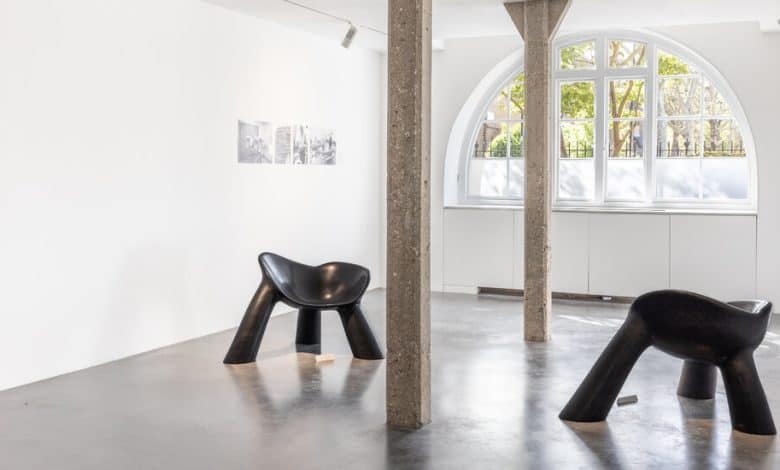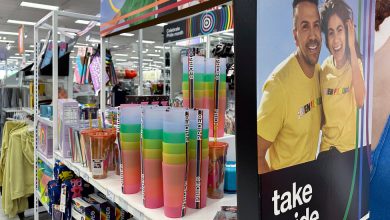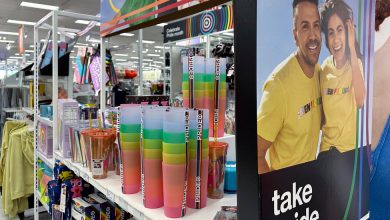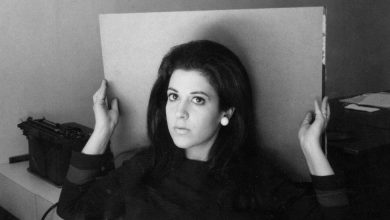The London Design Gallery That Is ‘Nonstop Exploring, Experimenting’

It was love at first sight, said Loïc Le Gaillard, a founder of the Carpenters Workshop Gallery (C.W.G.). The design gallery’s London base had been in the Mayfair district for 16 years where, he said, it was anchored in a white cube exhibition space, “having the same language as everybody else.”
Wanting room to hold more ambitious projects and exhibitions, he approached a real estate agent.
“I said, ‘find me something different,’” he said chuckling during a video interview. “A week later, the guy knocks on my door saying, ‘Loïc, I found something that is way too big, it is way too expensive, it is absolutely not where you want to be. But I think you should see it.’”
Upon walking into the 43,000-square-foot space, a Beaux-Arts building in a no man’s land north of trendy Notting Hill, Le Gaillard knew it was a place where he and his co-founder, Julien Lombrail, could stretch boundaries and have fun.
“The vibes are amazing,” Le Gaillard said. “We’re going to be able to achieve big things in there.”
The sprawling space, Ladbroke Hall, was built in the early 20th century as a car factory. It went on to live other lives, as a television studio and eventually an event space, until Le Gaillard and Lombrail bought the building and transformed it into a multipurpose space, a 30 million pound (about $37.5 million) project.
Opened in its current form just over a year ago, Ladbroke Hall now houses not only two floors of exhibition space for Carpenters Workshop Gallery, but also Pollini, an award-winning Italian restaurant, a space for private events, a small concert venue that holds weekly Friday jazz nights and a private bar for those who pay to become patrons of the gallery. Later this month, a bamboo garden extension of the restaurant will open, and in the early fall a massive subterranean hall for bigger shows will open, in time to host an exhibition to coincide with Frieze London.

Ladbroke Hall in North Kensington, a former car plant. It is now the home of Carpenters Workshop Gallery.Credit…Jérémie Souteyrat for The New York Times
To make a return on that £30 million investment, the gallery needs, of course, to sell its works. Next week, at TEFAF New York, the gallery will feature a handful of its best-known artists — including Nacho Carbonell of Spain, Vincenzo De Cotiis of Italy, and Ingrid Donat, a French Swedish decorative artist (who is Lombrail’s mother). It will also show some of its newest designers, like Marcin Rusak of Poland.
“It’s going to be the first time for me,” Rusak said, of showing at TEFAF New York, adding that the Carpenters Workshop’s New York space will also hold an exhibition of his work during the fair.
“Since I started studying design,” he said, “Carpenters Workshop were on the top of the list, and you know there was like this holy grail of a gallery to have, and I thought it was unachievable for a long time.”
While Lombrail grew up around design, Le Gaillard did not, but instead was exposed to the art world through his father who had a gallery. He moved to London from his native France at 20 to study corporate finance and worked in the cosmetics industry for almost 15 years.
“I decided in my mid-30s that I really wanted to do this,” he said, “inventing a new language when it comes to showing design.” Much of that was inspired and influenced by the work of Droog, a Dutch design company where, as Le Gaillard described it, form was more relevant than function.
Between Lombrail and Le Gaillard, they had good knowledge about the art world. However, Le Gaillard said, they both felt that there were “too many players” in the space already.
“Our pockets were not deep enough to realistically expect to be a meaningful player because it has become a very expensive game,” said Le Gaillard of the contemporary art world. “We thought actually, this is specifically where we think we have something to say and also be able to coach or art-direct some artists into developing objects, artworks, which are very much on the boundary between art and design.”
This idea of being shape shifters in the industry was something that appealed to many of the designers they represent.
“They took away the borderline between art and design,” the influential Dutch designer Maarten Baas, whom the gallery represents, wrote in an email. “It used to be an endless discussion in which category certain works (like mine) belong, but since C.W.G. that discussion vaporized.”
Taking their name from a former carpenters’ workshop in Chelsea where Le Gaillard used to have his office, they convinced Donat that they should, said Le Gaillard, “do this journey together.” Before long, she came on board as one of their first decorative artists.
One part of that journey was establishing a design atelier outside of Paris eight years ago, where up to 70 craftspeople may be working at any given time. Another was opening additional gallery spaces in Paris, New York and Los Angeles.
“We are nonstop exploring, experimenting new things and like anything, if you don’t try, if you don’t explore, if you don’t move forward, you stay still,” Le Gaillard said. “So it’s about how do you capitalize on this, but try to stretch it a little bit further without reinventing the wheel all the time, but at least try to see how can we make some old techniques with the new techniques and see whether it can be constructive and something valuable for the artists.”
Over the years, they built up not only their cadre of artists like Rick Owens, Wendell Castle, Johanna Grawunder and Karl Lagerfeld — yes, that Karl Lagerfeld, whose sculptural works they showed in New York in 2019 — but also a clientele that includes Brad Pitt, Tom Ford and Dasha Zhukova.
“They have such a close relationship with their artists,” wrote Nicole Hollis, a San Francisco-based interior designer who worked with the gallery when commissioning a custom dining room for an important collector client. She added that the gallery has “a special ability to let them create their best work and experiment while guiding them on what the end user is looking for. It’s a balance.”
Julia Peyton-Jones, the former co-director of Serpentine Gallery in London and currently the senior global director of special projects at Galerie Thaddaeus Ropac, agreed with that assessment. Carpenters Workshop, she wrote in an email, “look at culture in the round and explore” where disciplines like design, sculpture and art overlap. “It is this,” she wrote, “which marks them out from other galleries.”
While taking on such a mammoth space at an immense cost is a risk — something Le Gaillard acknowledged — Carpenters Workshop’s new home certainly has the potential to become a new artistic hub in a part of London that has long been left off the cultural map.
With the new subterranean space set to open this fall, there is a potential to move art and design lovers up to North Kensington — an area that’s between more destination neighborhoods, like Notting Hill and Queen’s Park — for lunch, an exhibition and a jazz concert to round out the day.
“Carpenters Workshop keeps us thinking about what we mean by design,” Deyan Sudjic, the former director of the Design Museum in London, wrote in an email. “It has a bravura approach, it’s ready to embrace the more difficult voices and be bold about what it does. Nobody else would have taken on Ladbroke Hall, with its huge and ambitious spaces.”
Baas, the Dutch designer, agreed. “They think way bigger and more complete than other galleries,” he wrote. “Perfect presentation, long term vision, edgy investments and they keep on pushing.”




